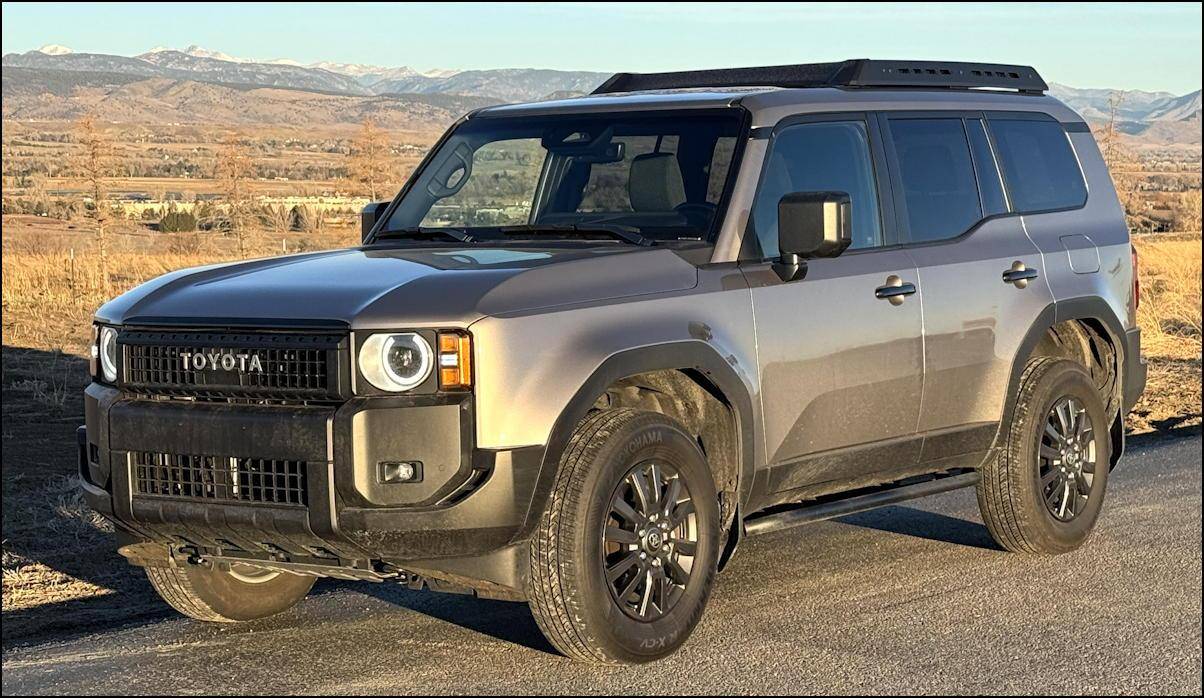The 1950s were notable for the rise of the Cold War and the American Civil Rights Movement, two enormous cultural forces that changed both American and global history. The decade after World War II, there was a boom in economic prosperity and a lot of former colonies in Asia and Africa asserted their independence. 1957 saw the launch of the Russian Sputnik satellite and the subsequent rise of the Space Race between the USSR and USA to see who would be first to send a man to the moon. In Japan, a company called Toyota was just entering the American market with a vehicle they called the Toyopet Crown (introduced in July 1958). Later renamed Toyota Motor Sales USA, the other vehicle the company introduced was inspired by WWII Jeeps and other highly utilitarian vehicles: The FJ25 Land Cruiser. In fact, the "J" stands for Jeep (the F referred to the F-series inline 6 engine).
Since then, the Toyota Land Cruiser has become known as one of the toughest and most reliable off-road vehicles in the world, remaining a top seller for decades. Paying homage to the original JF25, the 2024 Toyota Land Cruiser 1958 has a number of retro design elements that harken back to its utilitarian roots, including round headlights, a "heritage" front grill, and fabric trimmed seats. It also boasts a list of modern Toyota safety features. When Toyota invited me to spend a week driving one, I was ready to jump behind the wheel of this historical vehicle. The vehicle even boasted a particularly evocative color name: Meteor Shower:
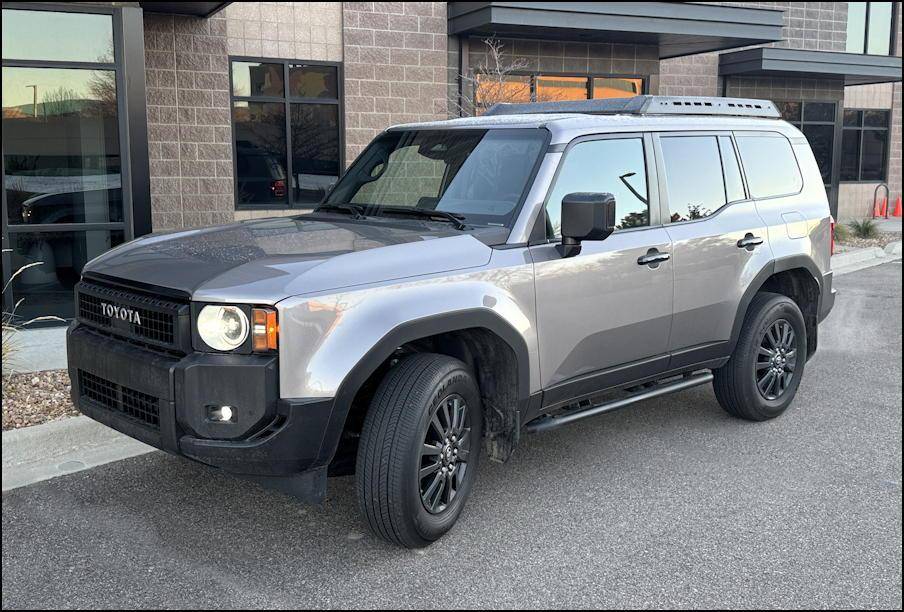
It's a smart looking SUV that the company categorizes as a "Wagon", and the optional roof rack and nerf bar (the tube running under the door. No, Toyota doesn't call it that) give it a touch of rugged chic too. Notice those circular headlights and for once, the front grill looks great rather than awkward or overly big (sorry, Lexus). There are also many retro touches with the interior of the 1958 model too, that were often an awkward fit with the tech and other modern features.
You can see that on first glance with the dashboard layout and design:
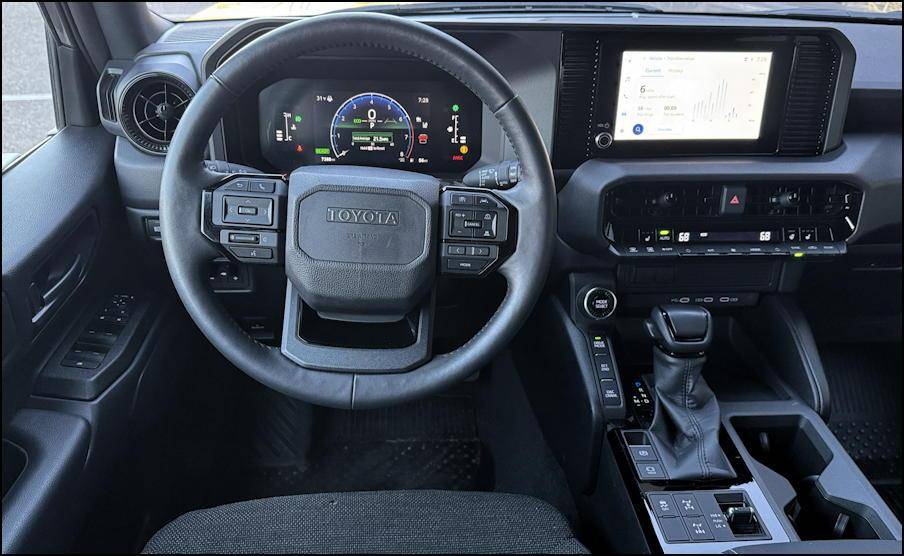
The tendency to rectilinear design marks it as retro - standard Toyota design is much more rounded - and some of it was fun. A favorite was the circular climate control fan outlets that actually made it easier to control airflow than most of the slimmer, but less functional modern designs. Rather than shy away from the boxy design of the old FJ25, you can see how often rectangles and slightly beveled rectangles occur, from steering wheel button groups to the armrest window controls to the main climate control center:
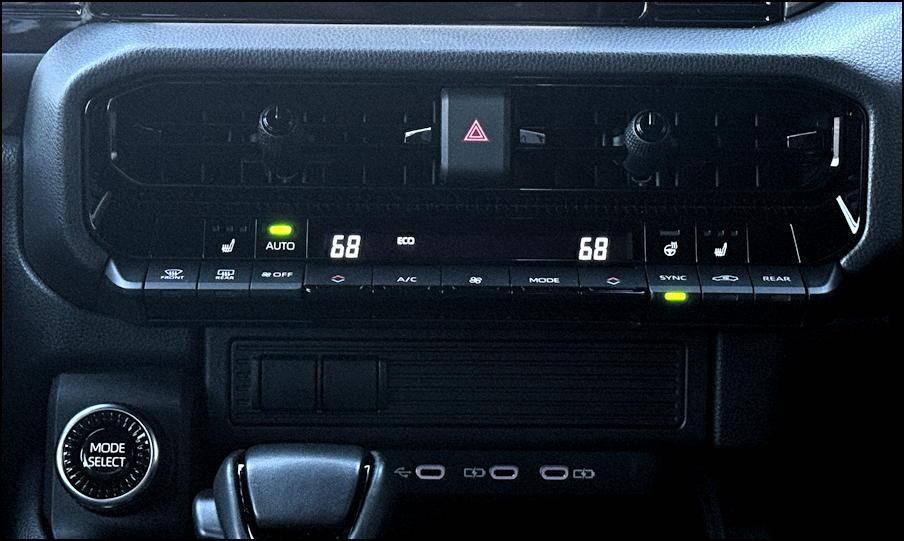
Speaking of the climate controls, I found them a bit lacking and was surprised that it was difficult to manage the temperature in the vehicle in the last dog days of Autumn. The cabin got hot, but even with the temperature set to 66º and A/C enabled it was more often warm air coming out of the vents than cool. Likely more time with the Land Cruiser would have helped me identify the ideal combination of features and settings to overcome this, but as the day cooled off, it seemed more attentive to the exterior temperature than the climate desires of the driver.
Also notice above the row of USB-C ports. Three of 'em, which is great, particularly since this is the first vehicle I've driven in quite a while that lacked a Qi wireless charging pad. Whether it was an Apple iPhone bug or something to do with the cable or connection, the one time I did have my iPhone 15 Pro plugged into the Land Cruiser 1958 it disconnected after a few minutes and then refused to recognize CarPlay until I restarted the vehicle. Once going again, the sound system was very nice and since the car is has a reasonably quiet interior, offered a pleasant listening environment.
Also notice in the climate control center that there are easily identified buttons for both driver and front passenger seat heaters and a steering wheel heater too. Nice to have them all easy to push on those cold mornings!
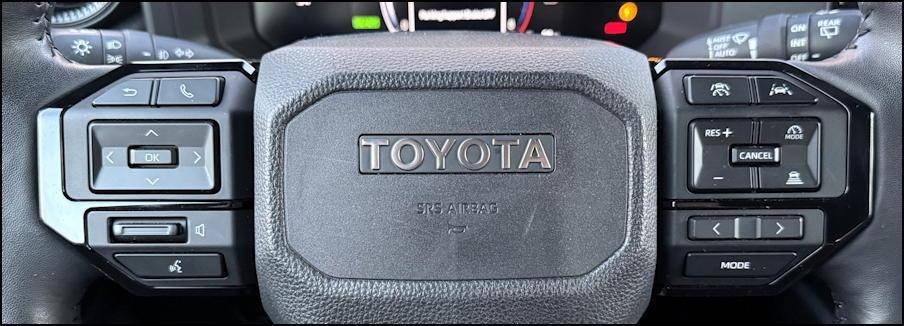
The layout of the steering wheel buttons definitely feels retro, but all the key features are easy to find, though notice that the audio volume is on the left side, while next/prev track and mode are on the right side. There are some inevitable compromises with the need for these controls to be symmetric, but at least I could find everything without hunting. The original 1958 FJ25 had no buttons on the steering wheel crossbar, however, a design that we'd now view as austere and overly utilitarian. Cruise control? Seat heaters? A fancy audio system? Those were years in the future.
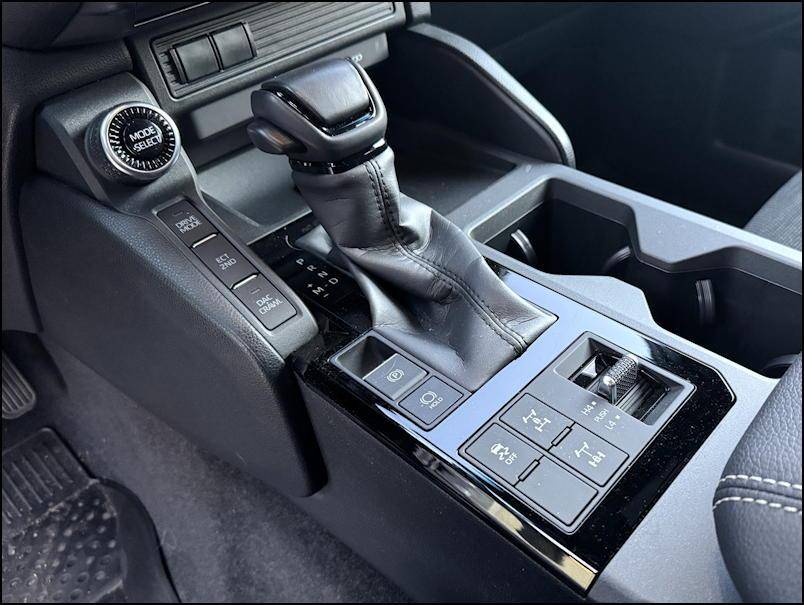
The center console seems to be where many of the 4WD features have migrated and it's rather nice to have everything in a central location, from drive mode select to H4 / L4 selection to the many towing and challenging terrain features. The gear shift is a classic design too, allowing an easy pull on the shifter to move from Park to Reverse and Drive. Want to get into manual gearing for a steep hill? Just move it to the left from Drive.
Moving back up the dashboard, the main gauge display was a bit busy but certainly bright:
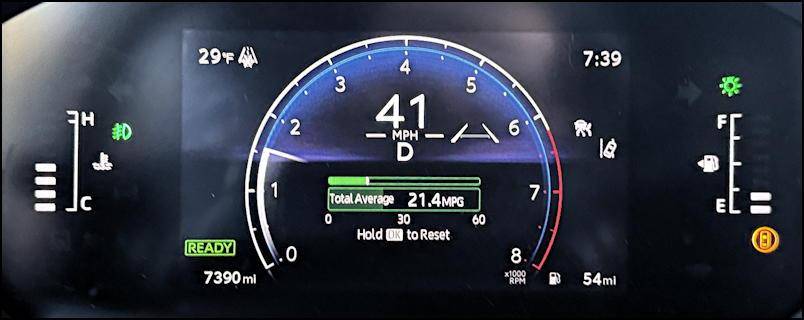
It's an interesting approach to the standard dials, given that the original 1958 FJ25 undoubtedly had both a speedometer and tachometer. Having that as a retro feature would have probably been a bit much, considering all the semi-cryptic warning lights that are now standard with modern vehicles.
You can also see the fuel efficiency here: My average across a few hundred miles of driving was about 21.5 mpg. EPA numbers for this model are 22/25, so it was a bit lower than it should have been, but perhaps that's because it wasn't tuned for altitude since I live at 5200 ft elevation? Given the excellent fuel efficiency of the hybrid RAV4 and Prius, it was a surprise to read the specs and learn that this was indeed a hybrid Toyota engine in the Land Cruiser. On the flip side, it's a fun drive with a surprising amount of power for a 2.4L 4-Cylinder engine!
Stepping out of the vehicle, I found it a bit less roomy than expected, particularly if you have a tall driver:
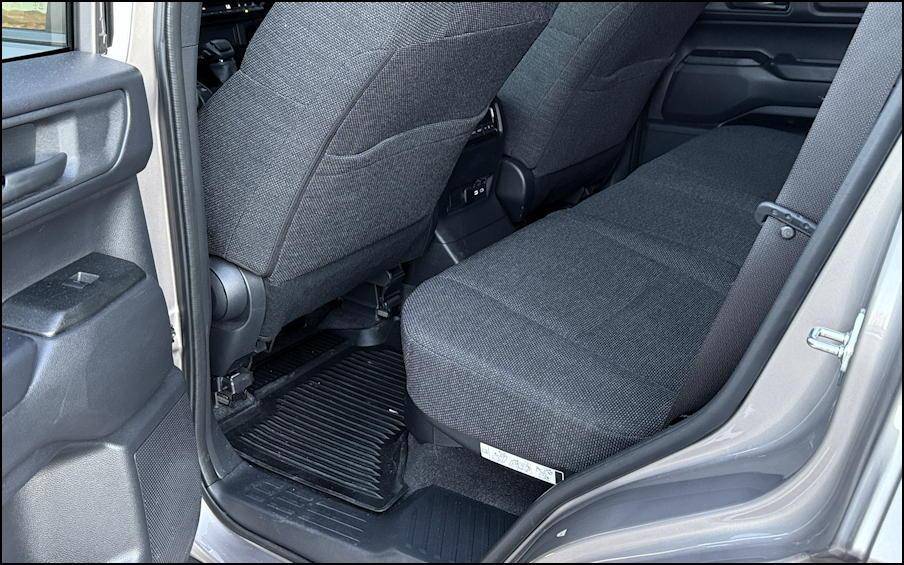
Notice here the fabric seats too, that's one of the retro touches of the 1958 model.
Swinging to the back, there's lots of cargo space and you can also see that the back seats can fold up to offer even more space:
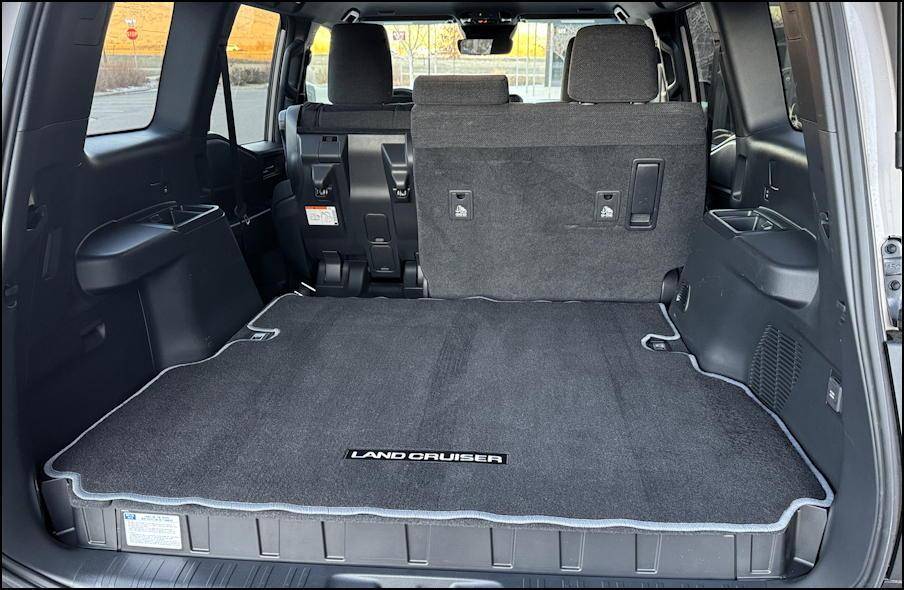
It's easy to imagine that the original FJ25 back seats were quite a bit different, likely a utilitarian bench that might not even have sported seatbelts. Things improve and that's a change for the better.
Finally, there's a lot I liked about the 2024 Toyota Land Cruiser 1958, from its exterior design to its retro interior touches, while still sporting most all of the Toyota safety technology. But... for a $60K SUV, there were a number of things that surprised me, from completely manual seats and rear tailgate to a steering wheel that wouldn't tilt up and out sufficiently for this 6'2" driver to be comfortable. The vehicle also had parking brake support disabled, something that it reminded me of with a warning overlaid on the main gauge display until I manually removed it. Every single time I drove. It never timed out.
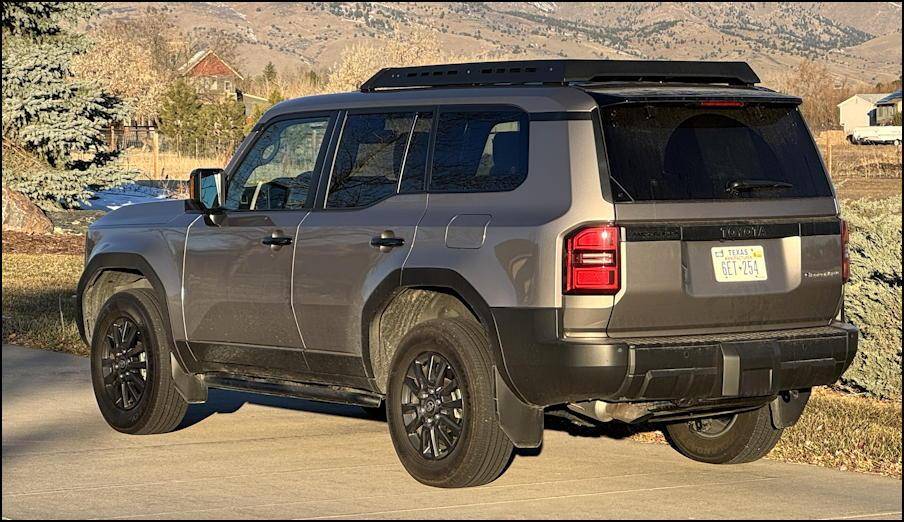
Value is a subjective measure, of course, but with its lack of fully automatic seats and other features, it felt a bit more entry level for a larger five-seat SUV than perhaps Toyota intended. Retro? Yes. But it also seems overpriced to me. It would be a wonderful vehicle at $45K but $60K plus tax and other inevitable add-ons, seemed too much. Then again, it is subjective, so if you're in the market for a larger 5-person SUV with lots of cargo space and a fun design, this is one to keep on your short list for a test drive.
2024 Toyota Land Cruiser 1958 4WD Wagon Hybrid, powered by a 2.4L 4-cylinder turbo engine and 8-speed automatic transmission with full-time 4WD. BASE PRICE: $55,950.00. Options Included: Ball Mount, Cargo Mat, Roof Rails, Roof Racks, Skid Plates. AS DRIVEN: $60,799.00.
Disclaimer: Toyota loaned me the Land Cruiser for a week in return for this candid write-up. This article originally appeared on PlanetDave.com with the title Vintage, but Spendy 2024 Toyota Land Cruiser 1958.
Hey Dave Taylor wants you to share this!
